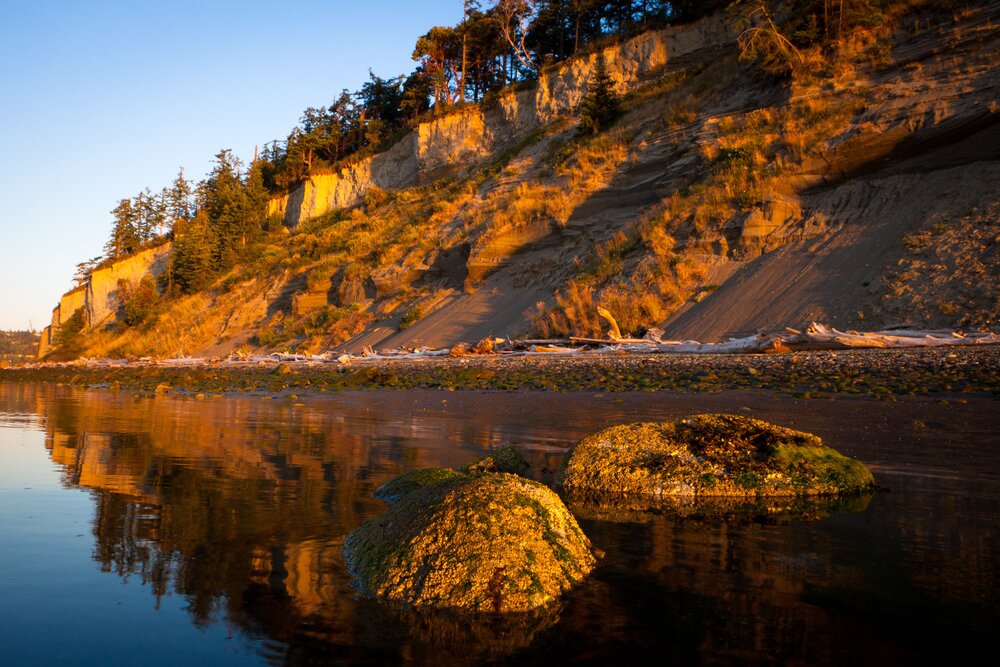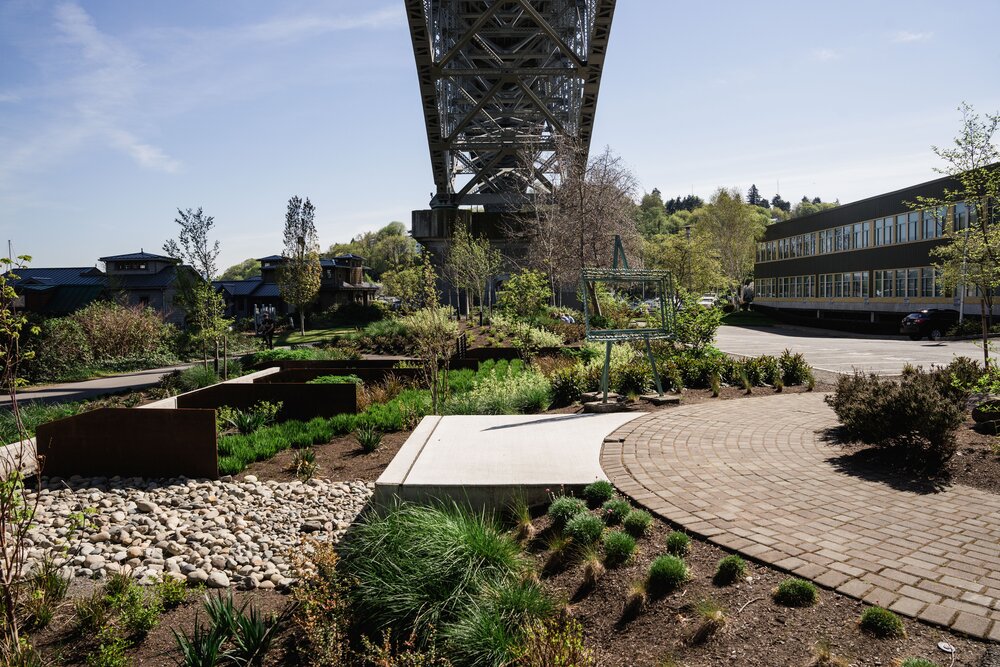The US Senate passed a major bipartisan infrastructure framework today, sending a suite of major investments to the House for its consideration.
Natural shorelines with bluffs, like this one at Barnum Point on Camano Island, are important for feeding sediment into Puget Sound. Photo by Benj Drummond.
By the numbers
$8 billion
for Forest Service and Department of the Interior
$89 million
for the Puget Sound EPA Geographic Program
$172 million
for the Pacific Coast Salmon Recovery Fund
$491 million
for NOAA’s Community-based Restoration Grant Program
nearly $500 million
for NOAA’s Coastal Resiliency Grant Program
$1 billion
for a new culvert replacement grant program
$1 billion
for FEMA’s Building Resilient Infrastructure and Communities (BRIC) and pre-disaster mitigation grant programs
$216 million
for a new Tribal Climate Resilience Program
$500 million
for Army Corps of Engineers ecosystem restoration projects
The $1.2 trillion package would fund a wide range of climate, clean energy, natural infrastructure, coastal restoration, forest restoration and resilience priorities. Some highlights that will touch down for people and nature in Washington include:
-
More than $150 billion for climate and clean energy. Solutions to lower emissions and help address the climate crisis include significant investments in public transit, reducing transportation sector emissions, accelerating the adoption of electric vehicles, modernizing the grid, advancing carbon capture technologies, and improving energy efficiency.
-
Forest resilience programs. The US Forest Service and Department of the Interior will receive much-needed support to increase funding for hazardous fuels removal, Tribal forest protection agreements, the Collaborative Forest Landscape Restoration Program, state and private forestry, and several new forest programs.
-
Natural infrastructure and disaster resilience. Senator Cantwell created a new $1 billion culvert replacement grant program that will bring major funding for fish passage barrier removals to Washington. The bill also includes substantial funding for the Federal Emergency Management Agency to help communities prepare before natural disasters strike, including a new Tribal Climate Resilience Program to fund community relocation planning, design and implementation where needed.
Bioswales, like this one under the Aurora Bridge in Seattle, filter polluted stormwater runoff before in runs into our waterways, making them cleaner and safer for salmon, people and anyone and everything that depends on the water. Photo by Courtney Baxter.
-
Habitat restoration. The bill invests in a wide range of water, fish and wildlife habitat programs, increasing funding for EPA’s Puget Sound Geographic Program to $89 million and providing a big boost to the Pacific Coast Salmon Recovery Fund and a host of coastal and watershed restoration programs administered by the National Oceanic and Atmospheric Administration, Natural Resources Conservation Service, and the US Forest Service.
>
“Our lands and waters are part of America’s infrastructure. Like good roads and bridges, healthy watersheds are critical to the safety and well-being of our families and the economic growth of our communities. This legislation includes game-changing investments in fish passage, community-based habitat restoration, Puget Sound recovery and Pacific salmon habitat restoration. We thank Senator Cantwell and Senator Murray for prioritizing these critical investments in the infrastructure bill and look forward to working with them to ensure it gets to the President’s desk for his signature.”
Senator Cantwell and Senator Murray each played a key role in securing these historic investments. Send them a message on Twitter or via email to say thanks for for prioritizing these critical programs that will help advance climate solutions in our state while supporting clean water, resilient communities, and healthy forests and fish and wildlife habitats.
Our lands & waters are infrastructure. Thank you @SenatorCantwell & Sen. @PattyMurray for your hard work on the bipartisan #infrastructure package that invests in habitat restoration, healthy watersheds, forest #resilience & more.
CLICK TO TWEET
Next Steps
The work on the infrastructure package isn’t finished yet. Now that it’s cleared the Senate, the bill moves to the House for consideration. Advocates and legislative leaders expect final passage this autumn. After President Biden signs the final bill into law, federal agencies should receive money for local distribution through competitive grant programs in early 2022.
Infrastructure statement from our newsroom
Meanwhile, Senate Democrats are advancing a budget reconciliation package today. This will proceed in tandem with the bipartisan infrastructure package, and will include additional climate and conservation investments at the larger scale necessary to address the biodiversity and climate crises.
Stay tuned to this space for updates on both of these historic bills as they move through Congress, and be sure you’re signed up for email updates to be notified of timely advocacy opportunities.
Keep me in the loop
Keep me in the loop
Banner photo: Tarboo watershed and Dabob Bay by Keith Lazelle.
